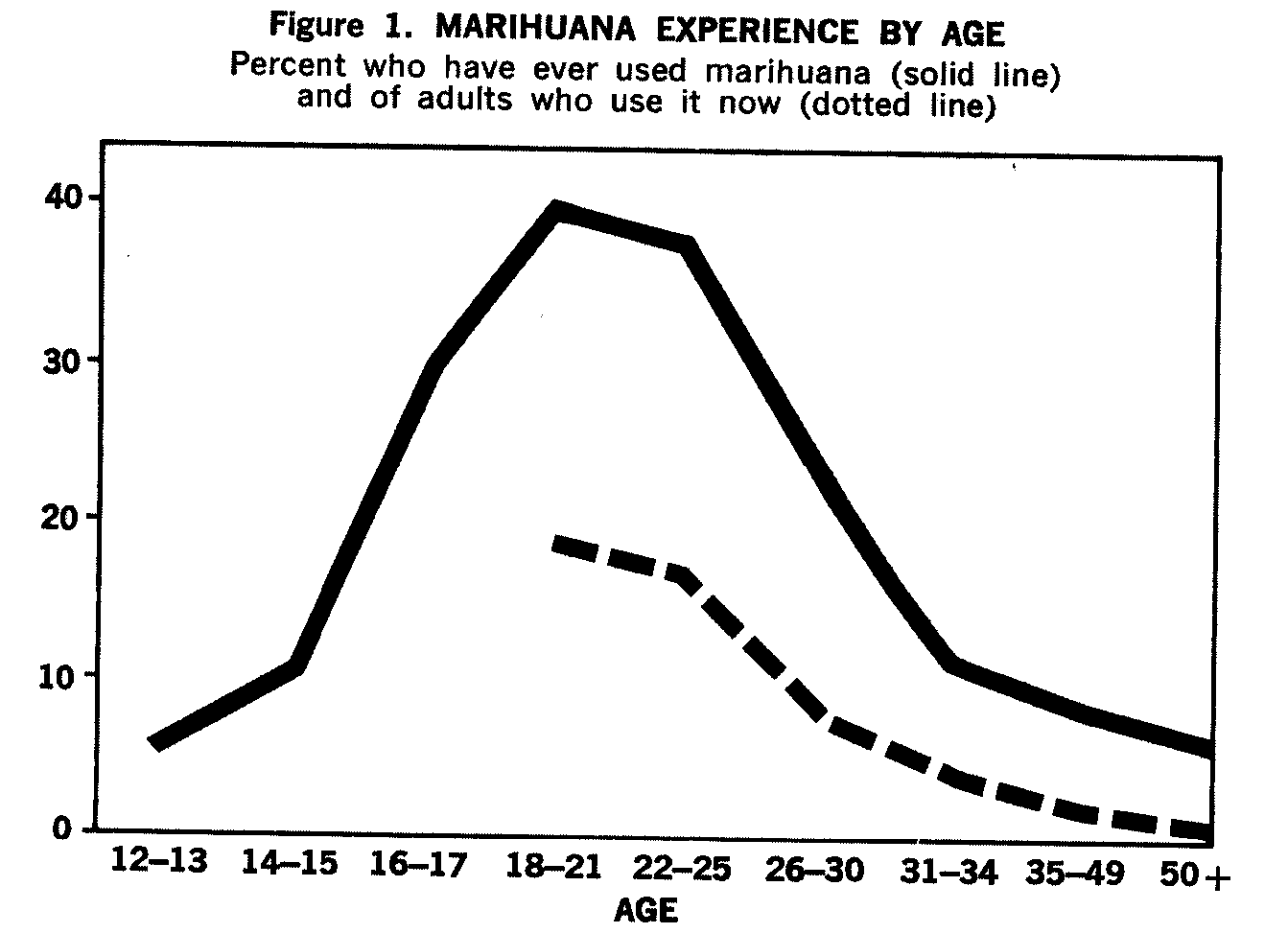|
|
|
The National Commission on Marihuana and Drug Abuse
Marihuana - A Signal of Misunderstanding.
Chapter II
marihuana use and its effects
DEMOGRAPHIC CHARACTERISTICS
On the basis of the Commission-sponsored National Survey, we have concluded that contemporary marihuana use is pervasive, involving all segments of the U.S. population. The Survey estimated that about 24 million Americans over the age of 11 years (15% of the adults 18 and over, and 14% of the 12-17 year olds) have used marihuana at least once, referred to in this Report as ever-users. Until recently twice as many males as females had used it; the most up-to-date studies of high school students, college-age individuals, and young adults carried out by the Commission indicate that this sex differential appears to be diminishing. In many youthful populations use is almost equally distributed between males and females.
Marihuana use does not appear to vary significantly by race. With respect to the religious affiliation of the users, Jews and Catholics appear to be slightly overrepresented as compared to Protestants.
Usage is highest in cities, towns, and suburbs but not uncommon in rural areas. States in the Northeast and West have considerably higher rates of use than have the North Central states, which in turn have significantly higher rates than those in the South.
Use is found in all socioeconomic groups and occupations, though slightly more predominant among persons with above-average incomes. A New York survey of the state's general population indicated that ever-use as well as regular use is almost equally prevalent among sales workers, clerical workers, skilled, semiskilled and unskilled workers, managers, owners, professionals and technical workers.
At the same time, the incidence of use seems to vary according to educational attainment. Among all adults not now in school, 5% of those with an eighth grade education or less have used the drug, contrasted with 11% of those who completed some high school, 14% of those who graduated from high school, 25% of those who completed some college and 21 % of those who graduated from college.
Age is presently one of the most significant correlates of marihuana use. Among the total population, those who have tried or used marihuana at least once, termed ever-users, are heavily concentrated in the 16-25 age bracket. Of all the ever-users, about half are in this group. At the same time, however, we should emphasize that use is by no means confined to teenagers and young adults.
The proportion of individuals in different age groups who have used marihuana is
indicated in Figure 1.

The incidence of use is greatest among young people: 27% of the 16-17 year olds, 40% of the 18-21 year olds, and 38% of the 22-25 year olds have tried marihuana; at the low extremes, 6% of the 12-13 year olds and 6% of the over-50 generation have used the drug.
Among those now in school, incidence also seems to rise with increasing school level:
Ever-users represent 44% of those persons now in college or graduate school; 30% of high
school juniors and seniors; 17% of freshmen and sophomores; and 8% of students in junior
high school.
At the same time, the use of the drug among adults is by no means confined to college students. Even among the 18-25 year olds, 75% of the ever-users are not now in school.
The initial patterns of contemporary marihuana use appear to be shifting; there is a trend toward increased use among college students as well as non-college students. Non-student users now span social class, income level and occupational classification. In addition, the proportion -of users increases during the teens, peaks during the young adult years and then falls off rapidly (Figure 1).
Having described the incidence of any use of marihuana ever, and demographic characteristics of the 24 million Americans who have tried the drug, we recognize the need to place this information into perspective. The policymaker must also be concerned with the patterns of use: frequency, amount consumed at each smoking, and duration of use.
|
|
|